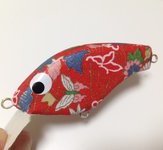There are printers that print carbon fiber reinforced resin. The ones I have seen prints from produce mediocre print quality, but as with many things I'm sure there was trade off with time and/or money.
I think one of the fascinations many people have with 3D printing is that amazing feeling like when somebody on a Star Trek show walks up to a replicator and says, "Banana Split" and one is magically assembled in seconds before their eyes from nothingness. I get it, but never tell a magician, "Make me a banana split," or the next thing you feel may be somebody placing a cherry on your head.
3D printing is not a magic replicator. It won't be in my lifetime. It probably won't be in my children's lifetime. It is a useful tool. It can be used to make tools to make tools. It can be used for proof of concept and prototyping ideas. It can be used for one off parts. Having a family member who prints parts as part of their business you should already have some understanding of this. That dream of one day being able to pick up your television remote and saying "Alexa, Print me a motorcycle," is necessary. That dream of something fantastic is what drives innovation, but picking up a tool and bloodying your knuckles using a wrench are what get things done. Atleast for today.
There are many ways a 3D printer can be used right now. In the fishing tackle industry I could 3D print an end product. I have at my disposal (belongs to my son) a small 3D resin printer. I could print a fishing lure. At the end of designing and printing (from a couple to several hours) I would have a fishing lure. If I lost my fishing lure in the bushes I could print another one. After a couple hours I'd have a replacement. Its not ideal. Its somewhat fragile compared to other materials. It needs a fair amount of secondary processing before it is 100% usable. Still it works... I could print a mold for a fishing lure. Its still fragile. The fishing lure would be produced faster at that point, but if my mold breaks from continuous handling (and it will) I have to start over. What I did with my first foray into 3D printing in collaboration with my son was 3D print a master mold. I used this to produce silicone molds. I used the silicone molds to produce strong fishing lures from casting resins with a pre-bent wire form set into the mold. While the 3D printer does not produce good product, and its very slow to do it, it can help to produce a tool that produces a tool that produces a tough durable product. The castable resin I use takes about 12 minutes to cure enough to demold. With additives I give it 20 minutes so it won't break when I pull it out of the silicone mold. It takes about 6 hours for the silicone I use to cure. It took about 4 hrs per side to print the master mold. The spent about 4 hrs on a rotating table to finish curing in the sun. It took me about 2 hours to design it. So it took 20 hours and 20 minutes to produce 1 bait. (Really they also need a full 24hrs to fully cure) Seems pretty abysmal compared to printing one lure in maybe 2 hours, BUT (and its a big BUT) its still faster than using the 3D printer to directly print a lure in a couple hours. I've made three of those silicone molds now, and I can make more. Right now I could walk out to the shop and produce 3 lure blanks every 20 minutes. It takes me working by myself less than 10 minutes to bend 3 wire forma, prep the resin, and cast it in 3 molds. So really I can produce right now 3 lure blanks every 20 minutes. Its not as fast as injection molding a hard plastic like ABS or polycarbonate, but its a lot faster then whittle one out of a stick with a knife.
I could double my production easily by just making 3 more silicone molds, and I used the 3D printer to allow me to do that easily. It only takes a few minutes to mix up a batch of silicone, and I don't have to stand there for six hours waiting for it to cure. Six of those easily produced silicone molds could allow me to produce a lure blank with eyelets already installed every 3 minutes and 20 seconds.
I'm not saying you should use the process I used to produce lure blanks. Just that 3D printing wasn't up to the job. It was however a very useful tool in the process when resulted in a pretty decent production rate. Its not yet the end all product, but it was very important to this process. You can't build an engine very effectively with just a forge, but it can be a very useful part of the process.
If you want to read more about my process for making lures this way I wrote up my experience on my fishing forums. http://yumabassman.com/forums-new/index.php/topic,10071.0.html Sorry. you can't see the pictures unless you are logged on, but here is a picture of one of the misprints just for fun.





